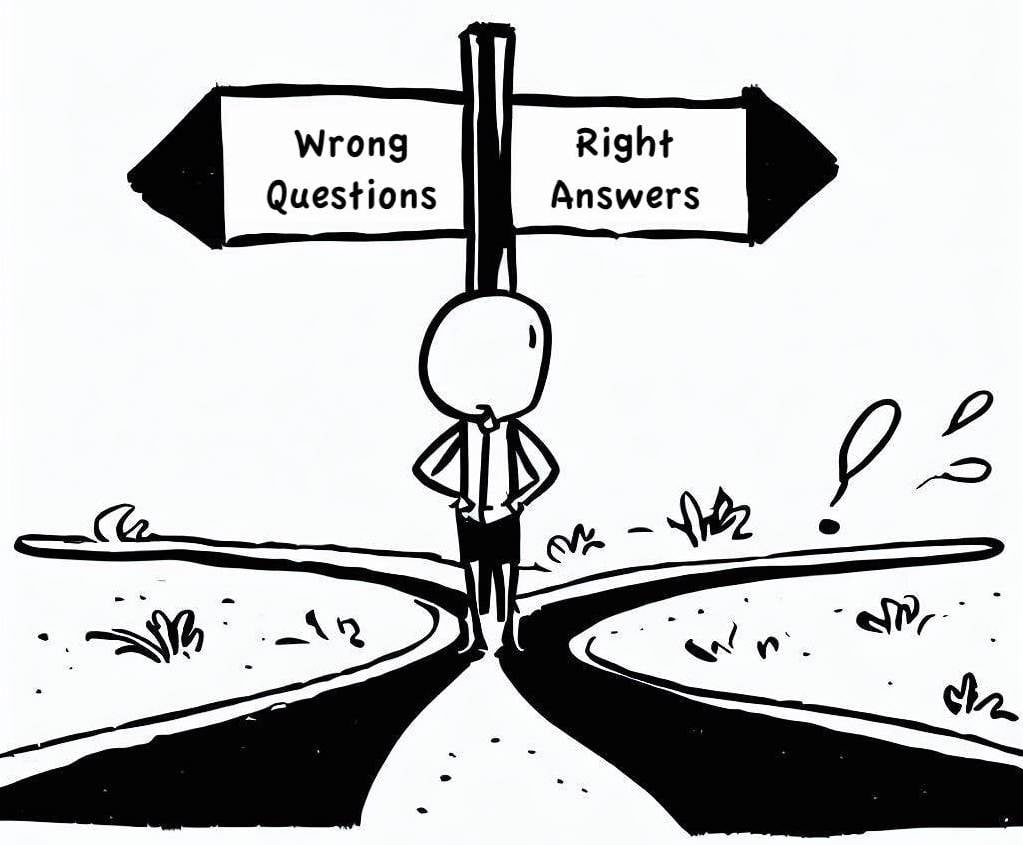
Customer surveys are an essential tool for any organization to collect valuable feedback and insights from their customers. Countless organizations spend time and resources crafting surveys but fail to garner meaningful results.
We will explore six reasons why customer surveys fail and provide recommendations on how you can turn them into a powerful asset for your institution.
1. Poorly designed surveys
One of the most significant reasons why customer surveys fail is poorly designed surveys. In my early management consultant days, I came across a wise saying: "If you ask the wrong questions, you'll get the wrong answers." The same holds true for customer surveys. The questions you choose set the foundation for the feedback you'll receive, so it's essential to be thoughtful and intentional.

A poorly designed survey can lead to inaccurate and unreliable data, making it difficult to make evidence-based decisions.
A common pitfall is asking leading, loaded, or confusing questions. For instance, "Wouldn't you agree that our service was exceptional today?" leaves little room for negative feedback, while a question like "Please rate our brand's performance, responsiveness, and overall satisfaction" contains too many variables (a triple-barreled question). Keep questions clear, concise, and focused on just one topic or aspect so it is easy for respondents to understand for more accurate measurement.
The success of a survey isn’t solely tied to the response rate. Inaccurate or biased responses can compromise the accuracy of the data collected, leading to potentially misleading results.
Recommendation: Before designing a survey, organizations should define their research objectives and target audience. Institutions should also consider the question format and survey structure of the survey. Tips for well-constructed surveys:
A common pitfall is asking leading, loaded, or confusing questions. For instance, "Wouldn't you agree that our service was exceptional today?" leaves little room for negative feedback, while a question like "Please rate our brand's performance, responsiveness, and overall satisfaction" contains too many variables (a triple-barreled question). Keep questions clear, concise, and focused on just one topic or aspect so it is easy for respondents to understand for more accurate measurement.
The success of a survey isn’t solely tied to the response rate. Inaccurate or biased responses can compromise the accuracy of the data collected, leading to potentially misleading results.
Recommendation: Before designing a survey, organizations should define their research objectives and target audience. Institutions should also consider the question format and survey structure of the survey. Tips for well-constructed surveys:
• Utilize a neutral tone
• Avoid using jargon or complex language
• Don’t lead with a biased statement before a question
• Avoid dichotomous response options (there is usually a range of sentiment)
• Don’t combine multiple questions into one
2. Survey is too long
When designing a customer questionnaire, it is easy to get caught up in wanting to obtain feedback on way too many topics. As Bertrand Russell once said, "The only thing that will redeem mankind is cooperation." The same can be applied to customer surveys – successful ones encourage active participation. However, long or tedious surveys often discourage respondents from completing them, leading to skewed or incomplete results. To keep customers engaged, keep your survey short, sweet, and to the point. Limit the number of questions and use a mix of question types like multiple-choice or open-ended questions to make the process feel less monotonous.

Recommendation: The shorter the survey, the better. Keep your customer survey limited to 10 to 12 minutes in average length (if offering an incentive). Otherwise, keep the average interview length to 6 to 8 minutes.
3. Lack of incentive
More often than not, a customer survey is missing a key ingredient… reward or token of appreciation for customer feedback.
Respondents are often busy and may not have the time or motivation to complete a survey without any incentive. A lack of incentive can lead to low response rates, which can significantly impact the survey's accuracy and effectiveness.
Rewards for research differ based on various factors including the type and length of research, audience, and industry. It's important to note that there is no one-size-fits-all approach to rewards.
Recommendation: Organizations should consider offering an incentive to respondents, such as a discount, a chance to win a prize, and/or a summary of the research results. Incentives can be effective tools to motivate respondents to complete the survey and provide more accurate and valuable feedback.
4. Poor timing
Did you know that the response rate for online surveys typically ranges between 20-30%? That leaves a significant chunk of your customer base unaccounted. One of the most overlooked aspects of customer surveys is the timing and delivery.
To boost response rates, it is critical to consider when you reach out to your target audience. For example, sending a survey immediately after a customer has interacted with your brand can make the experience fresh in their minds and could lead to more meaningful feedback. The time of the year, time of the week, and time of day can factor into strategically aligning the frequency of survey reminders with your target audience.
Additionally, sending surveys too frequently can annoy customers and lead to a decrease in response rates.
Recommendation: Organizations should carefully consider when to send the survey to customers. They should aim to send it at a time when customers are likely to have a positive experience with the institution and avoid sending surveys too frequently.
5. Lack of confidentiality
Customers may be hesitant to provide honest and critical feedback if they feel their responses will not be kept confidential. This can result in skewed or incomplete data, which can negatively impact the effectiveness of the survey.

Confidential surveys create a sense of trust and a feeling of respect in respondents. It makes them feel like their opinion is valued and desired equally. Customers tend to provide genuine and unbiased feedback when their responses cannot be linked directly to their identity. This ensures that their responses will more accurately reflect how they are actually feeling.
A study examining factors impacting online survey response rates in education research indicated that assurance of privacy and confidentiality highly influenced response rates.
Response rates for confidential surveys administered by a third party are usually better than for non-confidential surveys. This is because respondents are more likely to trust the stated intentions of a confidential survey. Additionally, they prefer that organizations do not use their data for any other purposes than for the research conducted.
Recommendation: Organizations should consider engaging third-party research firms to assure customers that their responses will be kept confidential and that their feedback will not be shared outside the confines of the research objectives. This can help to build trust with customers and encourage them to provide more honest and valuable feedback. Additionally, institutions should take appropriate measures to ensure that respondent data is stored securely and in compliance with applicable laws and regulations.
6. Poor communication
Poor communication can also impact the effectiveness of customer surveys. If customers do not understand the purpose of the survey or how their feedback will be used, they may be less likely to provide accurate and valuable feedback.
Pre-survey communication can explain the purpose of the survey, encourage participation, and legitimize the method of collecting feedback. This pre-communication should be tailored to fit your organization’s voice and position the importance of stakeholder input to the institution.
Providing advance notice of a survey demonstrates respect for respondents’ opinions, which can improve the response rate. Organizations that provide honest and transparent information upfront often receive the highest response rates from their surveys.
Recommendation: Organizations should communicate clearly with customers about the purpose of the survey and how their feedback will be used. They should also provide regular updates on any changes made based on the feedback received.
Summary Takeaways
Customer surveys can provide valuable insights and become powerful catalysts for improvement. However, they must be well-designed, incentivized, timed appropriately, and communicated clearly to the target audience. By addressing these common reasons for survey failure, organizations can improve their survey response rates and collect more accurate and valuable feedback from their customers. After all, as the old saying goes, "feedback is the breakfast of champions."
By-line:
Brian Mahoney, the author of this article, is a Managing Partner at Percept Research. As a key thought partner for institutional leaders, Brian is responsible for leading custom market research and strategic consulting engagements. He welcomes your questions and comments.


